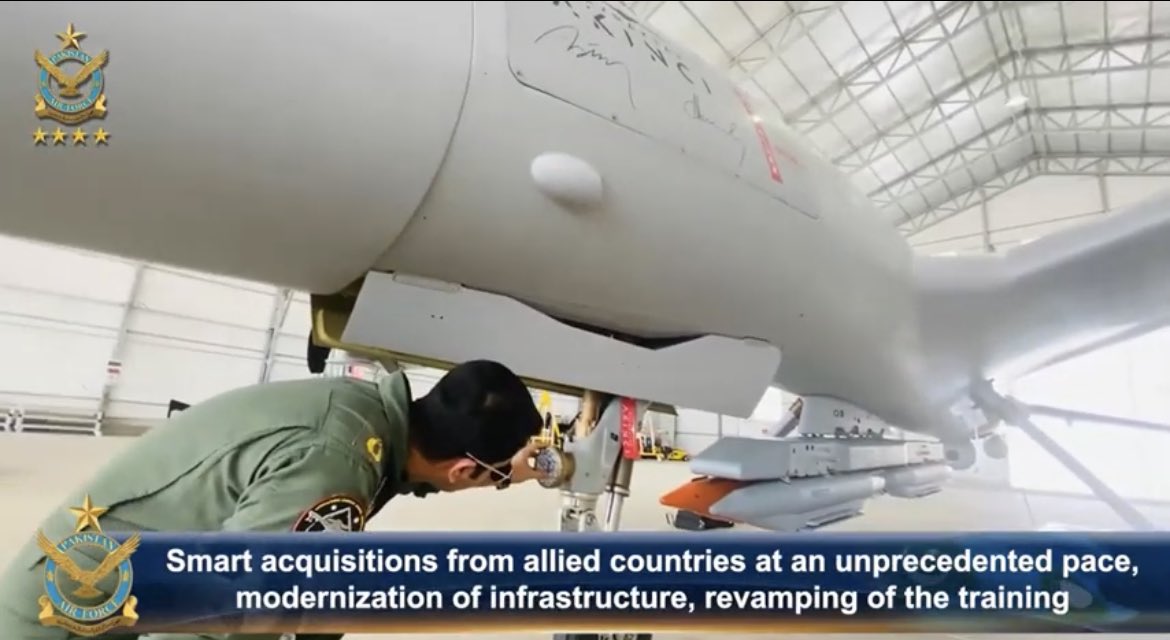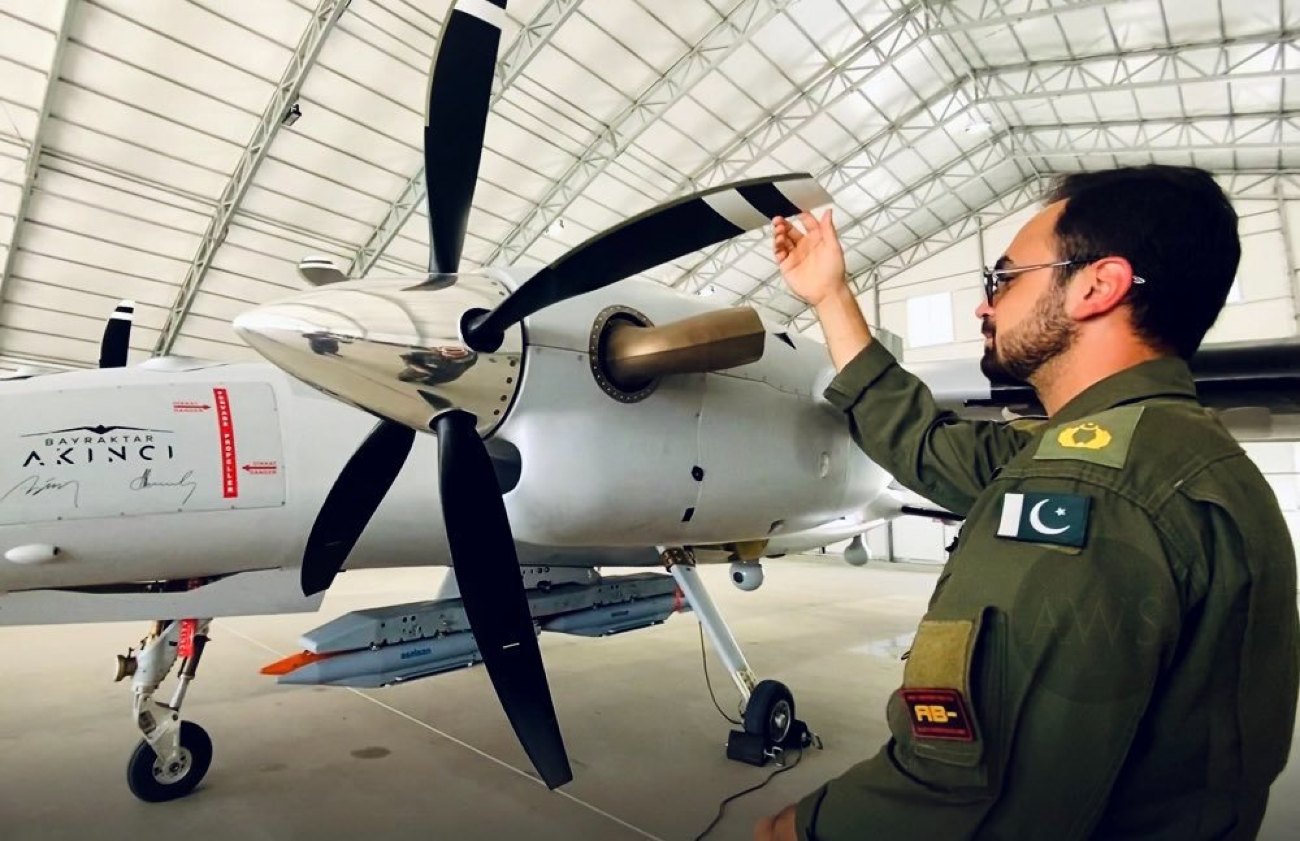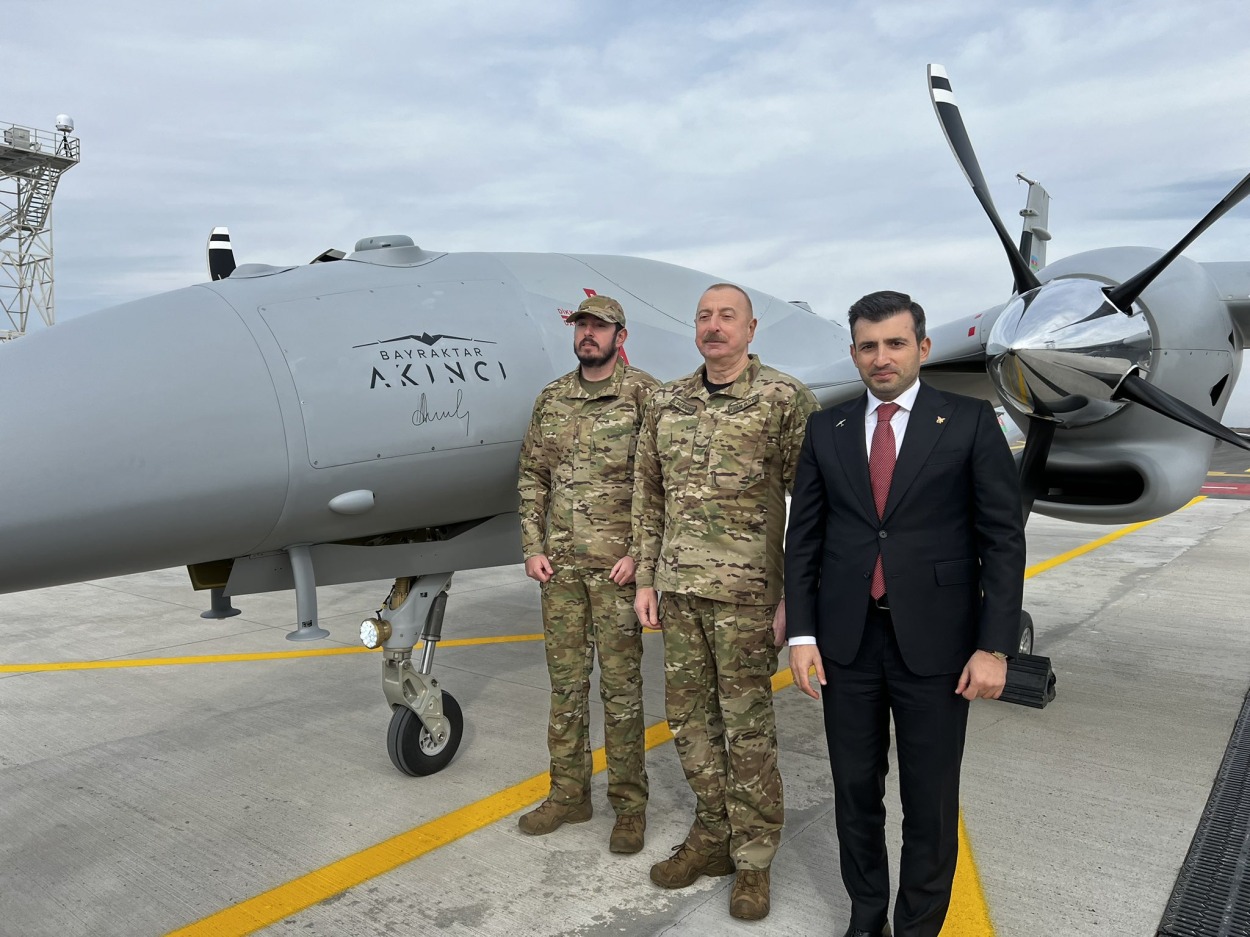After Pakistan, Turkey Arms Azerbaijan With ‘New-Gen’ Akinci Drones Amid Tensions With Armenia
Amid sporadic incidents of cross-border firing with Armenia, Azerbaijan has showcased the Bayraktar Akıncı unmanned aerial vehicle (UAV) during President Ilham Aliyev’s visit to the recently-opened UAV academy of its Air Force (HHQ).
Azerbaijan has opened a training facility and hangar for its new Akinci drone. According to Azeri authorities, the hangar at the facility will be the maintenance headquarters, and the training facility is for UAV operators learning to fly the drone.
The Bayraktar Akinci drone took to the skies to mark the unveiling ceremony and for a first glance at the drone. The President oversaw the takeoff and landing of the Akinci. A set of images published by the President’s office showed an Akıncı with manufacturer serial S46 and Azerbaijani markings. The chief technology officer of Akinci manufacturer Baykar, Selcuk Bayraktar, posted images of the ceremony on Platform X.
In addition to the drone, Aliyev examined a variety of air-launched weaponry, such as a general-purpose bomb with a glide kit, a MAM-T laser-guided bomb, and a Roketsan SOM cruise missile. At least ten other weapons were on exhibit, as seen in the Azerbaijani TV footage of the visit.
The unveiling of the vaunted Turkish-origin UAV comes at an opportune moment for Azerbaijan, as it remains embroiled in a conflict with Armenia.

#AKINCI’lar kardeş topraklardaki yeni yuvalarında… ✈️🐳🚀
Azerbaycan’da Bayraktar #AKINCI hangarının açılışını ve teslimat törenini gerçekleştirdik.
Birliğimiz daim olsun… 🇦🇿🇹🇷#AKINCI‘lar qardaş torpaqlarda yeni yuvalarında… ✈️🐳🚀
Azərbaycandə Bayraktar #AKINCI… pic.twitter.com/leFVpf8Wva
— Selçuk Bayraktar (@Selcuk) February 9, 2024
On February 13, the Caucasian rivals accused each other of opening fire on one another and claiming lives. This is the first documented instance of violence on the dangerous border since peace negotiations to put an end to the protracted conflict over the Nagorno-Karabakh territory began last year.
Cross-border firing was reported after the unveiling ceremony, with Azeri media claiming that Armenia was begrudged at Azerbaijan’s acquisition of the advanced Turkish drone. Armenian military analysts argued that Azerbaijan bought the Akinci to tip the scales in a region that included Iran and Russia, given Akinci’s range.
The statement issued by the MoD of #Azerbaijan, alleging that between 8:50 p.m. and 11:40 p.m. on Feb 12, the units of the AF of the Republic of #Armenia fired against direction of Azerbaijani positions situated in the northeastern part of the border, does not align with reality. pic.twitter.com/OK54qbnMhY
— MoD of Armenia 🇦🇲 (@ArmeniaMODTeam) February 13, 2024
Azerbaijan bought the Akinci drone very discreetly. Haluk Bayraktar, the CEO of Baykar, stated at a press conference in March 2022 that three countries were considering purchasing the Akinci drones without naming them.
At the time, Azerbaijan was speculated to be among the first few customers, given that it was already operating the Bayraktar TB2 drone and had employed it with incredible combat success during the Nagorno-Karabakh conflict of 2022.
By August 2022, the Azerbaijan government announced that a group of Azerbaijani UAV pilots had completed training on the Akinci UCAV, again triggering speculations that the country had either already signed an agreement for the purchase or was about to sign it. However, no formal announcement was made by the government or the Turkish UAV manufacturer.
Azerbaijani president Aliyev and his son watched a test flight of the Bayraktar Akıncı in Azerbaijan. The drones are a new addition to the arsenal AZ will use to slaughter Armenians in its next land grab attempt. pic.twitter.com/cI3DQSQ2LF
— Lindsey Snell (@LindseySnell) February 9, 2024
Baykar and Azerbaijan reportedly signed a memorandum of understanding for the production of Baykar drones in the country in April 2023.
However, the first customer of the UAV was Pakistan, Turkey’s South Asian ally, which received the first batch of Akinci UAVs in the summer of 2023. A deal for purchase was likely signed by Islamabad in 2022.

The Pakistan Air Force’s (PAF’s) Public Relations Department released a video featuring the Akinci combat drone in October 2022. The video also showed a PAF Squadron Leader wearing an Akinci patch.

Military expert Ramil Mammadli told Azer News that Armenia made some moves following the 44-day conflict between the two states and tried to buy military drones and strike UAVs. According to the expert, this forced Azerbaijan to modernize and expand the number and variety of UAVs in its inventory.
“The close cooperation between Azerbaijan and Turkey in the military-technical field allows us to acquire and use modern technologies of these vehicles produced in Turkey. I consider that Azerbaijan has to increase both its production and the army’s arsenal in the field of UAVs. The acquisition of Akinci will also strengthen the UAV techniques and arsenal,” he said emphatically.
Although the Azeri military specialists have attributed their purchase of the Akinci to the military purchases carried out by Armenia, the agreement for the Baykar drone likely precedes any major military acquisition by Yerevan.
Armenia is reportedly importing an anti-drone system from India, as reported by EurAsian Times in November last year. People who did not wish to be identified said Armenia has contracted to buy India-developed Zen Anti-Drone System (ZADS). The purchase is believed to be aimed at countering the threat posed by Baku’s advanced combat drones.
Baykar Akinci Drone
Bayraktar Akinci is a high-altitude, long-endurance drone that can be armed with weapons. Akinci is the Turkish word for ‘raider.’ The drone can fire various missiles, both air-to-air and air-to-ground.
The combat drone’s dimensions are 20 meters wide, 4.1 meters high, and 12.2 meters long. Its maximum cargo capacity is 1,350 kg, its takeoff weight is 5,500 kilograms, and its flight ceiling is 40,000 feet (12,192 meters).
“Bayraktar Akinci is equipped with dual artificial intelligence avionics, which supports real-time signal processing, sensor fusion, and situational awareness. It carries electronic support systems, dual satellite communication systems, air-to-air radar, collision avoidance radar, and synthetic aperture radar,” reads the specifications of Akinci drones by the Turkish company.
It has various weapons, including missiles like the Smart Micro Munitions (MAM-L) created by well-known Turkish contractor Roketsan. It is capable of being fitted with air-to-air missiles Gökdoğan (Merlin) and Bozdoğan (Peregrine) as well as the locally manufactured active electronically scanned array (AESA) radar.
It can also fire several additional indigenously produced weapons, including the Stand-Off Missile (SOM), a long-range air-to-surface cruise missile with a range of up to 150 miles (240 kilometers), which is manufactured in Roketsan.

According to Baykar, the Akıncı can strike targets on land and in the air. In addition, it can fly higher and stay in the air longer than Turkey’s current drone fleet while operating alongside fighter jets.
The Turkish manufacturer of the Akıncı, Baykar, says it intends to equip the UAV with a 250-kilometer-range armament by integrating the SOM-A cruise missile, but it has not provided any updates.
Baykar announced that an Akıncı had tested the Çakır cruise missile, which has a lower range, in September last year. Additionally, it was revealed that Akıncı had conducted tests with the 95-kilogram laser-guided glide bomb MAM-T and a 500 lb Mk 82 bomb equipped with the KGK-SİHA-82 guided glide bomb kit, which was created by Tübitak SAGE in Turkey in 2021.
The drone has been sold to other customers, including Ethiopia, Libya, Kosovo, Kyrgyzstan, and Saudi Arabia..


